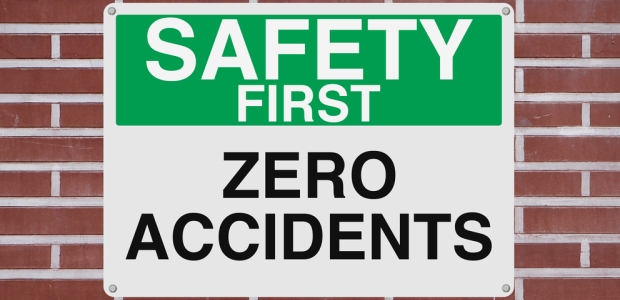
The More Things Change, the More They Stay the Same
Tracking OSHA's shifting position regarding safety incentive programs.
- By Sean Roark
- Jun 01, 2019
What follows is an update on the current state of regulations for safety incentive programs, augmented with observations regarding OSHA's shifting position on outcome-based safety awards. Understanding the forces influencing regulations can help safety program managers to make certain their programs are created with appropriate intent and designed to support a safer workplace that also clearly supports the reporting requirements.
Differing Views
Many companies have historically rewarded intentional safety by their workers. Signs touting the number of days since an accident, picnics, sporting events, and gifts have all been used to thank employees. However, when it comes to outcome-based rewards for results-based safety records (e.g., "Thirty days without an accident equals celebrating with a pizza party for lunch"), OSHA has traditionally seen it differently.

To be fair, OSHA has supported performance-based safety incentive awards, such as identifying a potential hazard or volunteering to serve on a safety committee. At the same time, OSHA has a legacy of criticizing outcome-based incentives, such as rewarding a month, quarter, or year of exceptional safety.
The inclusion of outcome-based rewards has proven to be an effective and ethical part of any behavioral modification campaign, such as a safety incentive program. Many whitepapers and program results analyzed by respected independent authorities support this. OSHA, however, does not share this view of how to encourage and reward a safe work environment.
An employer might want to uplift its employees by telling them, "To celebrate everyone being safe for the whole year, we want to give each of you a nice gift!" OSHA often takes a much darker position that this statement is more of an implied threat.
OSHA viewed the above message as subterfuge intended to communicate a message more along these lines: "Here is a nice gift, but you will not get the gift if you file an accident report or do anything that reveals you did not have a perfect safety record. Oh, and one other thing, if you report an accident, none of your work friends will get the shiny gift, and they will all blame you!"
OSHA has proposed that any outcome-based reward carries an inferred message that anyone who "plays ball" and doesn't report an accident or injury will benefit by getting a "payoff" of some kind. To use their terminology, rewarding a positive safety record is simply "encouraging under-reporting." This position completely disregards all of the independent studies showing gratitude and appreciation for excellent performance is one of the single greatest game changers in improving morale and changing behaviors.
A Repetitive Cycle
OSHA seems to take a regulatory position against result-based awards every five years or so, then see that position knocked down in court. Once struck down, the cycle begins again.
The latest, and very pronounced, iteration of this cycle occurred in 2017, when OSHA implemented new "Anti-Retaliatory Enforcement Procedures." Grouped with deliberate fraudulent reporting, permitting drug abuse, and evidence tampering was a definition that the practice of offering a meal, gift, or other reward in recognition of the absence of reported accidents ("rate-based" or "outcome based" criteria) was an "instrument of retaliation." OSHA believed the reward's simple presence carries the possibility that it is an implicit threat of that reward being withheld if a participant follows the law and files a required report.
The Incentive Federation Inc. (IFI), the incentive industry's legislative and regulatory nonprofit representative, responded vigorously regarding the fallacy of this position. Here's a parallel: Individuals often pay for purchases using cash. It would be an extreme over-response to suggest that no one should ever use cash because of the acknowledged fact that there are counterfeiters out there; instead, we design controls and safeguards to ensure that with reasonable precautions, cash is a safe and effective business tool.
My incentive industry colleagues would agree that no ethical incentive provider would create a program to discourage reporting. Tracking safety issues is an integral part of making a workplace safer. In fact, most programs I have implemented with businesses specifically include performance-based bonus points for promptly and properly reporting an injury or accident. Many impose severe penalties for not filing a required report. Even though we are in the "carrot," not the "stick," business, we accept this penalty because it is part of the employer's standard operating procedures to properly report any accident or injury, so the penalty will never apply unless someone is violating the company policy.
In October 2018, OSHA published a commentary stating that result-based (OSHA calls this "rate based") incentives are acceptable in a properly designed program. To summarize, the essential language (edited for brevity, but preserving context) of the OSHA commentary is:
"Rate-based incentive programs are also permissible under §1904.35(b)(1)(iv) as long as they are not implemented in a manner that discourages reporting. Thus, if an employer takes a negative action against an employee under a rate-based incentive program, such as withholding a prize or bonus because of a reported injury, OSHA would not cite the employer … as long as the employer has implemented adequate precautions to ensure that employees feel free to report an injury or illness."
My reading of this OSHA commentary is that, for anyone involved in safety incentive programs, this is a game changer and a return to reason. I agree with other recognized authorities that view this as a complete reversal of the prior OSHA position that rate-based rewards are never allowed because a rate-based award is prima facie evidence of discouraging reporting. It appears to me that this statement is a retrenching by OSHA, recognizing the weakness and indefensibility of their current rule.
This commentary validates and strengthens the published analysis of George Delta, IFI executive director and general counsel, and the central point of a formal written challenge submitted to OSHA by the IFI at the time the original "Anti-Retaliatory Enforcement Procedures" position was published. Delta explained the objectionable wording against rate-based awards would probably not stand up to a rigorous court challenge, because (a) it exceeds the mandate and authority of OSHA under the enabling legislation that created the Labor Department division in December of 1970 and (b) the underlying premise of their previous decision is not supported by either simple or in-depth analysis of provable outcome-based data from programs that have utilized such awards and achieved high-level recognition for program efficacy and integrity. By my reading, OSHA's fall 2018 commentary doesn't simply endorse the Incentive Federation position from three years ago, it virtually quotes it.
Anecdotally, OSHA has reportedly urged field officers to not file a complaint citing §1904.35(b)(1)(iv) unless there is clear evidence of intent, which has been widely interpreted by industry analysts as OSHA's tacit admission that this position was an excellent bullying tactic to intimidate those under its authority, as long as it wasn't revealed to be unenforceable. I believe that recent actions on behalf of the Incentive Federation, including taking steps toward achieving an ANSI standard for incentive programs that OSHA would have to recognize under federal law, contributed to this backtracking on their position. More information about that initiative is available through www.incentivefederation.org.
This means that a well-designed program, supported by pro-reporting policies, which includes proven, effective, results-based rewards can again be integrated into your existing or new programs.
If you need help designing an effective safety incentive program, contact an incentive professional at www.incentivemarketing.org.
Will this policy change again? History tells us another aggressive intimidation assertion by OSHA is likely in another five years. That same history tells us that facts and real-world analysis seem to undercut this position sooner each time it resurfaces.
This article originally appeared in the June 2019 issue of Occupational Health & Safety.